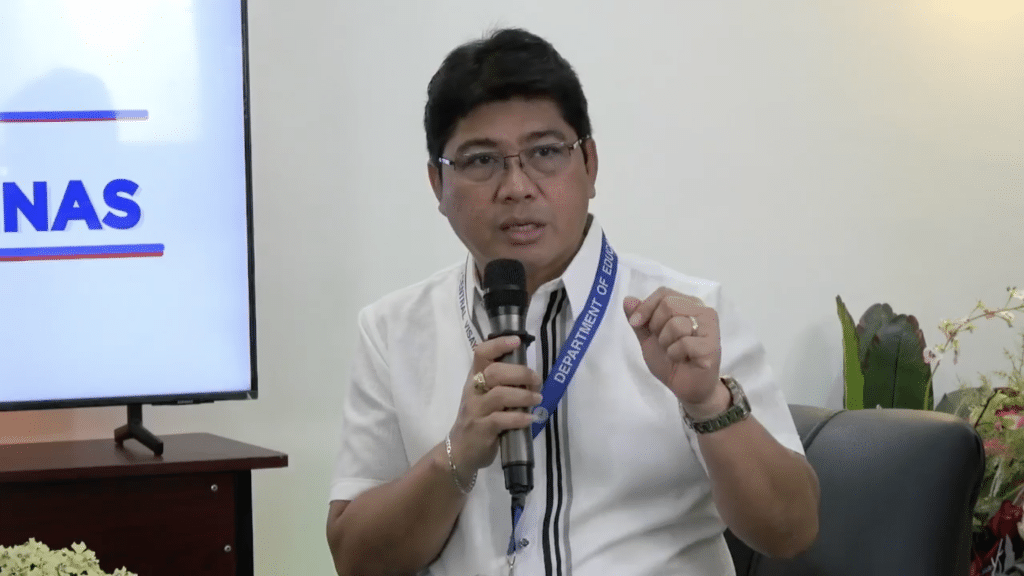
Deped-7 Director, Dr. Salustiano Jimenez, gives updates on Deped-7’s accomplishments in the 21st episode of Kapihan sa Bagong Pilipinas by the PIA-7. | Screengrabed from PIA
CEBU CITY, Philippines — Discontinuing the use of mother tongue as a medium of instruction for Kindergarten to Grade 3 is a “welcoming development” especially for Central Visayas, the regional director for Education said.
Dr. Salustiano Jimenez, regional director of the Department of Education in Central Visayas (Deped-7), said this on Tuesday during the ‘Kapihan sa Bagong Pilipinas’ program of the Philippine Information Agency (PIA) here.
What is RA 12027?
Republic Act (RA) 12027, or the Act of Discontinuing the Use of the Mother Tongue as Medium of Instruction from Kindergarten to Grade 3, amends Sections 4 and 5 of RA No. 10533 or the Enhanced Basic Education Act of 2013, which mandates that teaching assessment for Kindergarten up to Grade 3 students shall be taught in regional or native language and that the curriculum must conform to the Mother Tongue-Based Multilingual Education (MTB-MLE).
Jimenez said that before the law was amended, they had to use the Sinugboanong Bisaya, applying the words in the Lubas sa Dagang Binisaya (Ludabi) dictionary.
“Sinugboanong Binisaya has 11 variations. So, it would be difficult for us to come up with a book for Sinugboanong Binisaya that’s why until now, we’re not able to come up with the book for Sinugboanong Binisaya because of that 11 variation,” he said.
READ MORE:
Cebu City Court denies Tomas Osmeña’s appeal on SRP lot sale
Jimenez added that if the region would come up with a book, knowing that there are other variations of Bisaya in the Visayas regions, it would not be beneficial to the others.
“Imagine that, if you’re a pure Cebuano diri sa Cebu City ka, moadto ka’g Negros so they have other variation. There are even words in Bisaya here that is having a different meaning in Negros Oriental and also in Bohol,” he said.
“So if we come up with a book then sa atong libro mao ni nga variation atong gamiton, dili na magamit ngadto sa lain,” he added.
Jimenez said that the students’ language preference varies depending on the medium used in schools.
Confusions
There are other learners whose first language is English as it was used in their schools and households, while there are also learners whose first language is Bisaya, Jimenez added.
“What happened man gud sa atong Sinugboanong Binisaya is it complicates because we follow the dictionary sa Ludabi nga mas lisod hinuon, even me as the regional director, og wa ko ma regional director, wa ko kahibaw nga ang binisaya sa Dominggo, Ligid-ligid,” he said.
“For me it is a welcoming development, at least it will ease the burden of our teachers unsaon nila pagpasabot sa mga bata,” he added.
Since the implementation of using mother tongue as a medium of instruction in 2013, Jimenez said that it somehow helped the learners but there were “confusions” happening in the field.
He said that parents and teachers reported to him that they found it difficult to deliver the lessons to their children because of the words that are foreign to them. | with a report from Dianne Sampans, Inquirer.net